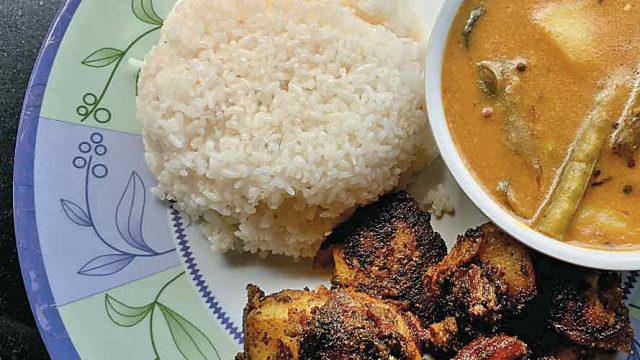If you’ve ever relished the delicacies that Sindhi cuisine has to offer, then I’m sure that reading the title of this article has already made your mouth water. However, if you haven’t, then this piece of writing is guaranteed to introduce you to a whole new world of flavour!
History
Sindhis originally migrated from the region of Sindh, which is now a part of Pakistan, during the India-Pakistan partition in 1947. Their cuisine, to a great extent, is influenced by the Mughals, Arabs, Turks and other dynasties that ruled over the Sindh province at different points in time.

If you want to try Sindhi food but are conscious of your waistline, I have bad news – most food in this cuisine is fried. Daily meals consist of wheat-based flat-bread (phulka) and rice accompanied dal and sabzi. Contrary to popular belief, Sindhis do not eat papad every day!
Sindhis have some unique methods of preparing their food – one such method is called seyal where the cook needs to prepare the food with an onion or ginger-garlic base. Another popular preparation method is called tamate mein (in tomato gravy). In many Sindhi households, meals are also prepared using saye masala, where you use a base of coriander leaves and fresh garlic to give the food an extra kick of flavour.
Popular dishes
One cannot talk about Sindhi cuisine without mentioning the ever-popular dish of kadhi chawal. Kadhi is made with Bengal gram flour (besan) and tamarind or kokum, and also has boiled potatoes, drumsticks, lotus stems and other vegetables depending on the cook’s preferences. A popular addition to the dish is a preparation of fried potatoes on the side called tuk. Some Sindhis have a sweet tooth and sprinkle their helping of kadhi with sweet boondi.


While kadhi chawal might be the most popular Sindhi dish, the cuisine is so much more than just that. Dal pakwaan is an extremely popular dish, and personally, one of my favourites. The dish is made with chana dal, with fried maida bread crisped to perfection. Dal pakwaan tastes heavenly when paired with finely chopped onions and sweet chutney. This dish makes for the perfect lazy Sunday brunch since it’s fairly easy to prepare.
Sindhis are famous for their ingenuity and that really comes across in another common dish on the Sindhi menu known as seyal mani, which is made with leftover chapatis. The chapatis are tossed in with a salty and spicy mix of tomatoes, coriander, green chillies and other spices. The chapatis can be replaced with bread if you don’t like to eat leftover food.


Arguably the best Sindhi breakfast dish is koki. It’s basically a kind of wheat flour paratha. Finely chopped onions, green chillies, garlic and coriander or cilantro leaves are added to the flour and kneaded. It’s important that you don’t knead the dough too much – the bread must be stiff. You can pair koki with just about anything – yogurt, pickle, papad, or even chai. Lolo is the sweet version of koki and is made with sugar syrup. This dish is usually prepared during two contrasting occasions – during the festival of Shitala Satam (Thadri in Sindhi) and for people suffering from chicken pox or measles. No chicken soup for the Sindhi soul! It’s lolo all the way.
Another popular dish made in Sindhi households is the teevan curry, which is a mildly spicy mutton preparation made with yogurt and mint leaves. It’s cooked with daag (brown onion gravy) and can be had with plain rice, pulao or chapatis.
A sweet and spicy dish called seyun patata made with sweet vermicelli and deep-fried spicy potato is a hit in Sindhi households.
Sai bhaji is another simple dish consumed widely. Sai means green and bhaji means vegetable and the dish is literally just that. It is made with spinach, fenugreek leaves, green chillies, tomatoes, coriander, chana dal and other vegetables like brinjals, okra and potatoes depending on the cook’s preferences. This is generally consumed with bhuga chawal, which is a rice preparation made with onions, peas, French beans and garam masala.
A dish made during special occasions is tairi – it’s aromatic, sweet and is prepared with saunf, dhoongi (dried coconut), dhaakh (black raisins) and dry fruits. This preparation also tastes great when paired with sai bhaji.
Snacking Sindhi-style
Sindhi sana pakora is a famous snack mainly because it is fried twice. It’s deliciously crispy and must be paired with green and sweet chutney. Health nuts should definitely stay away from this snack. Mirchi pakora, aloo tikki and spinach pakora are some other must-have Sindhi snacks.
Read more in the Outlook Traveller Getaways India’s Culinary Heritage




